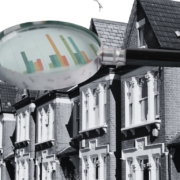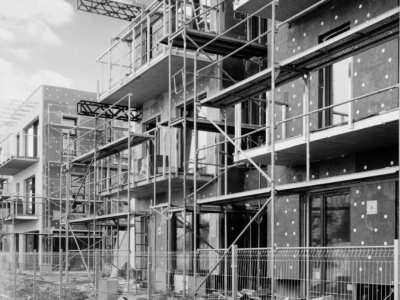It is fair to say that the past two years have highlighted the surprising diversity of fortunes within the UK’s property market.
Naturally, the economic and social toll of the Covid-19 pandemic has profoundly shaped the property landscape, altering home buyers’ preferences and investors’ behaviours, as the social and professional dimensions of life as we knew it changed irreversibly.
Despite the unforeseen challenges, the performance of the residential property market in the UK has been remarkable, as evidenced by the most recent house price indices.
The Office for National Statistics recorded average UK house prices had increased by 13.2% over the year to June 2021.
Undoubtedly, the property sector has come a long way since its dreary performance in the initial months following the onset of the pandemic, where it became near impossible to complete a property sale due to social restrictions.
The success of the vaccination drive and growth of business activity, resulting from the lifting of social restrictions in the second half of the year, has led to a faster than expected economic recovery, which added to the stimulating effects of the stamp duty holiday extension has led to a sustained boom of activity and a confident return of property investors to the market.
Now, as market-stimulating measures begin to recede from view, questions remain concerning how the post-pandemic market dynamics will shape investors’ preferences and behaviours.
Indeed, at such a crossroads, it is critical to assess for indications of the planned direction of travel.
As such, FJP Investment commissioned a new independent study taking in the views of 512 property investors, all of whom owns two or more properties in the UK, to examine their investment plans over the next 12 months and uncover the regions in the UK that are gaining traction among investors.
Investor appetite remains strong
Encouragingly, it appears that investors are in a bullish mood heading into the post-pandemic climate. Nearly half (44%) said they intended to expand their property portfolio in the coming year.
On the other hand, similar numbers (41%) expressed an intention to sell one or more properties specifically to downsize their portfolio, with nearly half of those amongst the youngest cohort surveyed (48%, 18-35) looking to cut back on their property holdings.
This may reflect an intention to capitalise on record average house prices while the market remains heated, or simply a desire to assess how the market shapes over the coming years, with many typical preconditions now under question.
Interestingly, the research found 44% of UK property investors have become more inclined to consider investing in properties in rural areas since the start of the pandemic- a likely sign that the impact of hybrid working patterns on individuals’ increasing mobility across urban and rural areas has not gone unnoticed by investors.
These figures underline that while the real estate sector naturally remains subject to the varying fortunes of the economy and investors themselves, there is much cause for optimism that the property market will remain liquid and active in the coming year.
Recognising emerging regional hotspots
The survey also looked at investors’ inclinations to invest in different regions in the UK, examining which areas are set to benefit from the release of saved wealth and pent-up demand that has accumulated over the past year.
Perhaps unsurprisingly, London retained its crown as the UK’s leading investment hotspot, with 40% of those surveyed expressing interest in investing in the nation’s capital.
Following shortly were emerging economic hubs in the West Midlands and East of England, ranking second and third with 32% and 26% of investors respectively planning to purchase a property in these regions.
Indeed, cities like Birmingham and Coventry have seen impressive development and price growth among homebuyers and investors alike in recent years.
Further down the list, the North East and North West of England are making encouraging progress, with investors indicating 13% and 9% intention to purchase property in these areas.
This is indicative of the growing appeal of the housing market across the North of England.
While these areas have been on investors’ radars for years, with key infrastructure and gentrification projects under way and hybrid working patterns set to accelerate the regeneration of rural communities and emergence of new working hotspots, it is likely that these regions will attract a high level of property investment in the coming years.
Looking ahead, with a post-pandemic landscape on the horizon, there are a number of encouraging signs that the property market will maintain its momentum.
While it remains to be seen how investors’ intentions will materialise, there are new opportunities to be capitalised on as a result of the paradigm shifts of the pandemic, which will likely bring to the fore emerging investment hotspots across suburban, peripheral and rural areas in key regions across the country.






















Comments